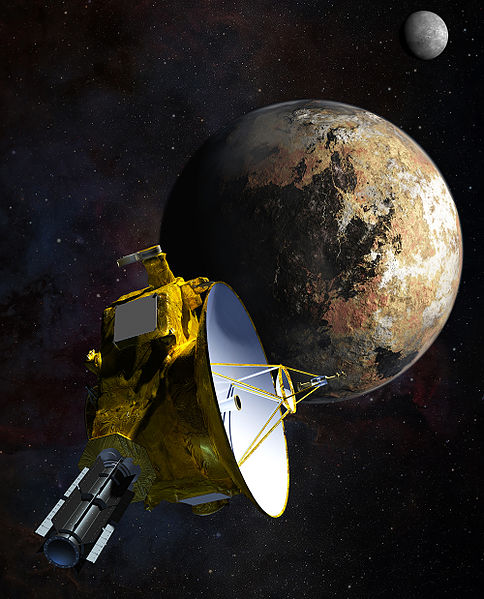Nat Geo set to air ‘Mission Pluto’ in July, just ahead of Dwarf Planet flyby
National Geographic Channel (NGC) joins top scientists at the Johns Hopkins Applied Physics Laboratory in conjunction with NASA on a historic mission to the edge of our solar system with the goal of capturing the first clear images and data ever recorded of Pluto — a “dwarf planet” so mysterious, not even the high-powered lens of the Hubble Telescope can tell us what it looks like.
Pluto could hold the key to further unlocking the mysteries of our galaxy, and the world waits in anticipation for the cutting-edge spacecraft New Horizons to complete its fateful approach.
Premiering Tuesday, July 14, at 9/8c – the same day New Horizons is scheduled to make its historic flyby of Pluto — Mission Pluto takes an in-depth look at the ambitious project from start to finish, leading into the final hours of a journey more than nine years, $700 million and over 3 billion miles in the making.
The special, hosted by Jason Silva (@JasonSilva) (National Geographic Channel’s hit series Brain Games), also premieres July 19 on Nat Geo Mundo and globally on National Geographic Channel in 170 countries and 45 languages. For more information, visit www.natgeotv.com and follow us on Facebook, Twitter at@NatGeoChannel @NGC_PR and Instagram (@natgeochannel).
“If you’ve seen me on shows like Brain Games, you’ll know how much I get fired up by the wonders of the universe and the power of technology to bring them to us,” says Silva. “We’re on the brink of profound discoveries about the last piece of real estate in our solar system.”
In 2006, New Horizons took off on a rocket from Cape Canaveral, Florida, to begin its 3-billion-mile voyage. Hurtling through space faster than any manmade object has ever traveled and propelling free of the Earth’s gravity, New Horizons sped out beyond Mars, past the great gas giants like Jupiter and onward toward its final rendezvous with an object no bigger than Alaska, just 1,400 miles across … Pluto.
On July 14, 2015, when the spacecraft arrives, it will speed by the dwarf planet at close to 9 miles per second without any means of stopping. The core flyby will last less than two hours, creating a very tight window for the spacecraft to photograph Pluto, map the surface, analyze the atmosphere, and examine the geology of the surface. At the speed New Horizons is traveling, the smallest miscalculation could have catastrophic consequences as the spacecraft makes its final approach. But the science team is hopeful.
Mission leader Dr. Alan Stern, a veteran of 24 previous NASA missions who was interviewed for the special, commented, “The people on this team, most of them have worked on [the mission] for a very big portion of their careers. When you put that much time and effort into a project, you’re pretty excited when you’re on Pluto’s doorstep.”
Signals traveling at light speed between the craft and the team back on Earth take four and a half hours to make the more than 3-billion-mile journey, which means that after years of meticulous preparation, New Horizons will carry out its final directive while its creators blindly wait, hoping like all photographers that they “got the shot.”
As New Horizons beams data back, host Jason Silva helps viewers digest everything that is happening by breaking down the science behind the mission and explaining the origins of our fascination with Pluto. When did we first discover Pluto? Why was Walt Disney so inspired by the planet that he named a beloved cartoon character after it? Why did the International Astronomical Union decide to strip Pluto of its planetary status — and why were people so upset about it?
Though the outcome and overall success of the New Horizons mission is yet unknown, Mission Pluto pays homage to one of NASA’s most ambitious, most daring and highest-stakes endeavors to date, and celebrates the “little planet that could” … Pluto.















